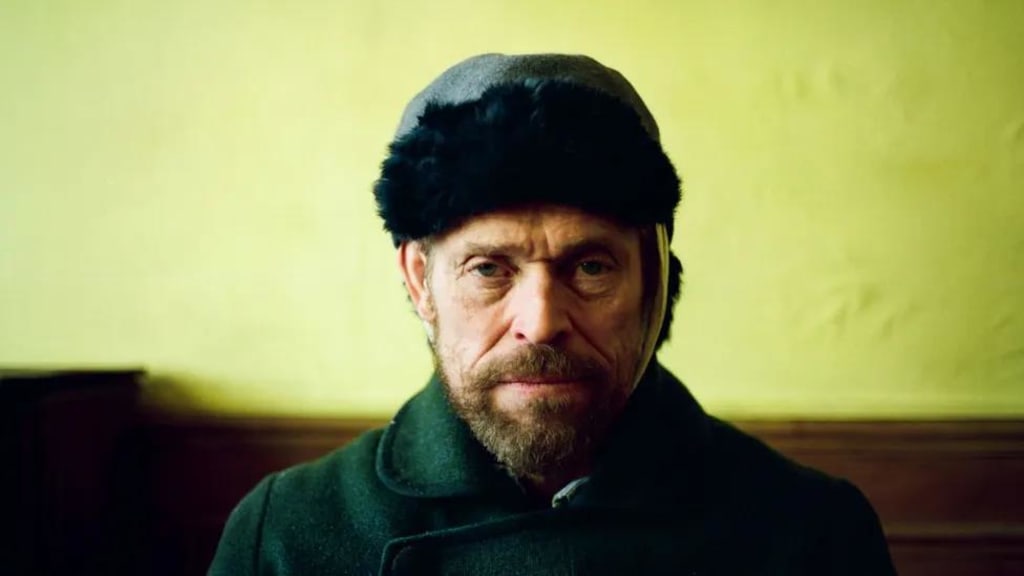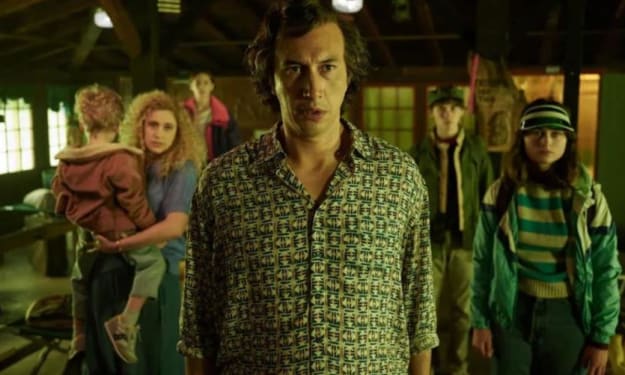Film review: At Eternity’s Gate
Willem Dafoe gives a ‘magnificent performance’ as the troubled Van Gogh in Julian Schnabel’s ‘gloriously artistic’ film.

There may never have been a painter as sure of his artistic vision, yet as emotionally needy, psychologically troubled and socially isolated as Vincent van Gogh. Willem Dafoe’s magnificent performance captures every bit of the artist’s complexity in Julian Schnabel’s At Eternity’s Gate. With stunning visuals and a judicious balance of poetry and drama, Schnabel draws us into both Van Gogh’s genius and his tortured life.
Film-makers have been fascinated by Van Gogh for decades, of course, from Lust for Life (1956) with Kirk Douglas as the scenery-chewing hero, to last year’s beautiful, animated Loving Vincent. Schnabel, esteemed as both a painter and the director of films including The Diving Bell and the Butterfly, takes an impressionistic approach, freely inventing scenes and swerving from history when it suits him.
The story he tells, of Van Gogh’s last years, is familiar nonetheless. Financially supported by his loving brother, Theo (Rupert Friend), Van Gogh lives and works in the village of Arles, joined for a time by Paul Gauguin (Oscar Isaac). In and out of asylums, he died at the age of 37 in Auvers-sur-Oise, a thorough failure commercially.
At the start of the film a voiceover by Dafoe expresses Van Gogh’s poignant loneliness. Over a black screen, he says of the villagers in Arles, “I just want to be one of them. I would like to sit down with them and have a drink.” The film then opens to reveal the sky and fields surrounding the village, a vista of rich colours, the blues and greens astonishingly like those in Van Gogh’s paintings.
Dafoe, with reddish hair and beard, piercing blue eyes and a craggy face, looks the part, but the brilliance of this performance comes from the way he quietly conveys the painter’s thoughts, insecurities and moments of inspiration.
Schnabel almost exclusively immerses us in Van Gogh’s point of view. In extended scenes, the artist wanders through the landscape, looking up at the light filtering through the trees or clambering up a rocky hill for a better view. A change in the light seems like an event to him, and Dafoe’s expression responds to tell us whether he is searching or is finally inspired. Tatiana Lisovskya’s lovely score, lyrical with piano and strings, fills the soundtrack in those scenes. The effect is not at all slow, but entrancing, like losing yourself in a painting as everything else around you falls away.
Benoît Delhomme’s cinematography echoes Van Gogh’s world-famous works, including the famous yellow walls of his bedroom at Arles, without creating caricatured, poster-like images. We see a field of dead sunflowers and later, one of Van Gogh’s famous, bright sunflower paintings simply appears on his bedroom wall, without Schnabel calling attention to it. The camera is often as graceful as Van Gogh’s contemplation of nature, but at times moves erratically, to convey his off-kilter perspective.
Schnabel offsets those scenes of Van Gogh’s creative life with his deteriorating ability to function in society. Disturbed by schoolchildren as he paints in a field, he shouts and terrifies them. In the village, he chases and grabs other children after they have thrown rocks at him.
Gauguin is a stabilising force for a time. Isaac plays him as brash and larger than life, assertive in his debates with his fellow artist about their different approaches. Adored by Van Gogh, when Gauguin says he is about to leave Arles, Van Gogh runs off, howling with grief. Dafoe’s face displays the anguish felt by the painter, an excruciating moment.
In the aftermath of Gauguin’s abandonment, Van Gogh tells a doctor that he cut off his ear, hoping to send it to his friend. One of the most notorious scenes in his life, it doesn’t get a grisly on-screen moment. Less obviously, the film moves on to patrons in a Paris cafe reading a rave review of Van Gogh’s work, then cuts to show him in a straitjacket, curled up in the corner of a hospital bed.
There are a few small clumsy stretches. Van Gogh is asked several times why he paints, and his answers eventually make the film seem a bit didactic. “I paint to stop thinking,” he tells Dr Gachet (Mathieu Amalric), who is posing for his portrait. It is true that Van Gogh left behind voluminous written records of this thoughts about art, but that doesn’t mean similar pronouncements work on screen.
The episodes about Van Gogh’s death are problematic. The film shows him not committing suicide, as is commonly thought, but being shot by two local boys, one of them dressed as Buffalo Bill. And as the film progresses, Schnabel emphasises Van Gogh’s near-mystic visions. The film doesn’t decide whether they were the source of his artistic genius, or symptoms of illness, or both, but leans toward the ‘mad genius’ definition of the artist. When Van Gogh says on his deathbed, “Don’t blame anyone,” he becomes Christ-like, a choice that threatens to reduce a richly defined character to a one-dimensional saint.
There is no need to share Schnabel’s interpretation, though. Agree with him or not, he allows viewers to experience the mystery of creativity in this gloriously artistic film.
About the Creator
Sue Torres
Is there any other reason to live to change the world?






Comments
There are no comments for this story
Be the first to respond and start the conversation.